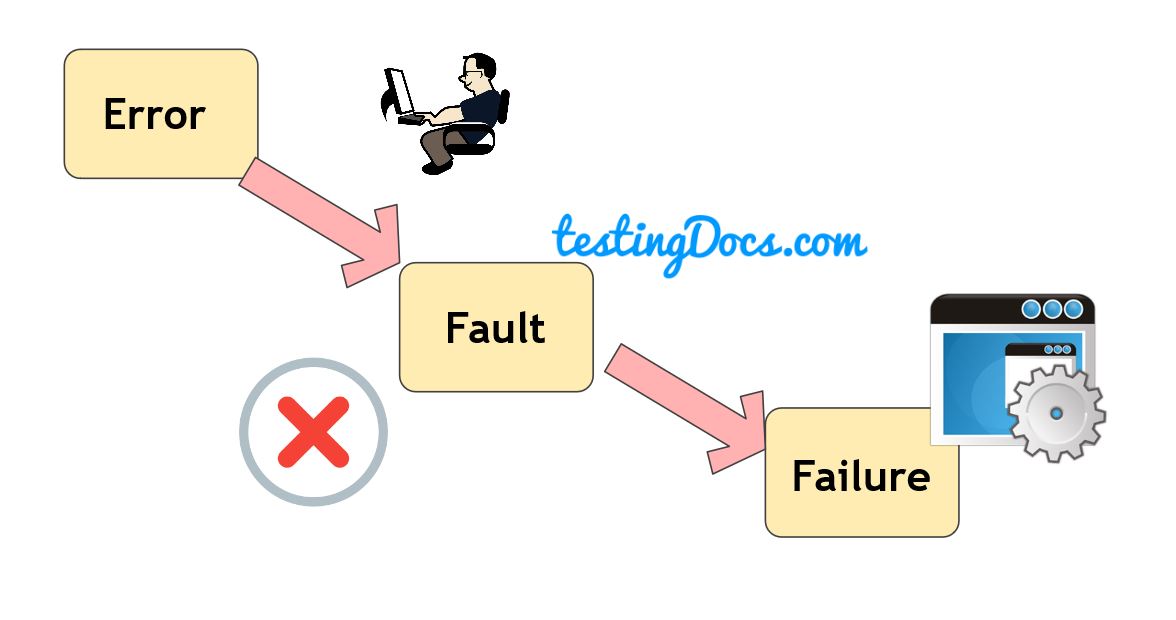Difference between Error, Fault and Failure
Overview
This tutorial will examine the differences between Error, Fault, and Failure. These are often misunderstood by beginners in Software Testing.
Error/Mistake
To Err is Human.
In Software, an error is a human action or mistake when developing/using, or operating a system or software application. It is the difference between a computed, observed, or measured value or condition and the valid specified or theoretically correct value or condition.
An Error is an action that produces an incorrect result. An incorrect human action results in faults being injected into the software program. Examples are misinterpretations, omissions, etc.
An error can be a mistake, misconnections, or misunderstanding on the part of the software developer. Human errors and mistakes introduce or inject faults into the system.
Fault
A fault is introduced into the software as the result of an error. It is a variance in the software that may cause it to behave incorrectly and not according to its specifications and requirements. Software faults are usually called “bugs” or “defects”.
Failures are caused by faults in the application. Therefore, it refers to an underlying condition within the software application that causes failures to occur.
Debugging is the process of locating the fault or defect, repairing the code, and retesting the code.

Failure
A failure is the lack of ability of a software system to perform its required functions within specified requirements. As a result, the product cannot perform the activity according to its specification. Failures refer to a behavioral deviation from the user requirement or the product specification. A failure occurs if the observed behavior of a system or program deviates from its intended behavior.
The flow
An error characterizes a particular state of a system; a failure is a particular event, namely the transition from correct service delivery to incorrect service. An error may cause a fault to be injected into the application, and a fault may cause failure when the application is executed.
A single error may cause many faults. For example, a wrong algorithm is applied in multiple modules of the system, and that causes multiple faults in the system. Similarly, a single fault may cause many failures in repeated executions. A faulty system often fails in repeated executions until the problem is fixed or patched.
On the other hand, the same failure may be caused by several faults. For example, an interface or interaction failure involving multiple faulty modules.
—
Software Testing Tutorials:





